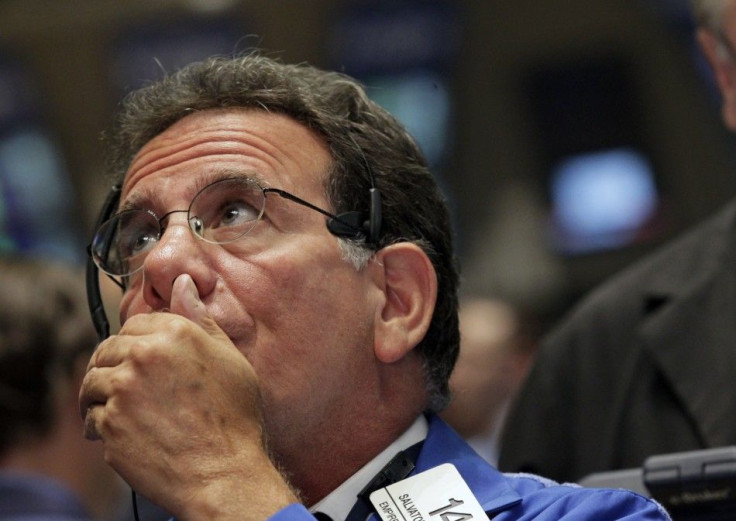Dow Plunges More Than 500 Points as Fear Escalates
Dow Jones Industrial Plummets

U.S. stocks plummeted Thursday, following a similarly huge sell-off in Europe, on growing fears that the global economy is sinking into a recession, ahead of worries about tomorrow’s July jobs report.
Based on preliminary figures, the Dow Jones Industrial Average plunged 512.83 points, or 4.31 percent; the S&P 500 dropped 60.17 points, or 4.78 percent; while the tech-heavy Nasdaq tumbled 136.68 points, 5.08 percent.
All three major U.S. indices have now erased all gains made during the year. Over the past ten days, U.S. indices have fallen more than 10 percent.
The VIX, or the market’s “fear gauge,” surged by 30.54 percent to 30.52, thereby crossing the “30” level which marks a high magnitude of investor fear.
Not surprisingly, Treasury yields fell as investors sought out safe-haven assets away from the carnage of equities.
Earlier, gold prices hit a record high of $1684.70 per ounce,
“Investors had lofty expectations for a second half of the year stock market and economic recovery,” said Lawrence M. Glazer, managing partner of Mayflower Advisors in Boston.
“The recent economic data suggests that these expectations were too high. Clients are nervous ahead of the U.S. jobs report and we are seeing some forced selling and liquidations. We are seeing bargain-hunters emerge and looking for opportunities seeing some positives in fear.”
Glazer added that the recent economic data has been “terrible” and now everyone acknowledges that reality and it is being increasing priced into the market.
“Small business owners are telling us that growth is stalling in the US,” he noted.
“European credit concerns are adding to the anxiety.”
Earlier, European indices also tumbled -- The FTSE-100 of the UK, Germany’s DAX and France’s CAC-40 dropped well in excess of 3 percent.
European Central Bank President Jean-Claude Trichet said in a press conference on Thursday: "It's true that we are in a period of a high level of uncertainty, not only in euro area but at the global level.”
U.S. investors are also likely pulling out of equities in anticipation of an extraordinarily poor jobs report due out Friday. Consensus estimates suggest that 75,000 new jobs were created in July.
However, if the number is worse than that, stock could plunge even further.
The Labor Department reported Thursday that initial jobless claims totaled 400,000 last week, reflecting the pervasive weakness in the labor markets and continued high unemployment.
Despite Thursday’s plunge, it was not nearly the bloodbath investors have witnessed during some previous notorious market sell-offs.
On Sept. 29, 2008, two weeks after the collapse of Lehman Brothers, the Dow plunged almost 778 points (the largest single-day point-loss in history) after the House of Representatives rejected President George W. Bush’s $700-billion bank bailout plan.
(By comparison, the Dow shed about 685 points on Sept, 17, 2001, the first day of trading following the 9-11 terrorist attacks).
All told, on Sept. 29, 2008, about $1.2-trillion in market value vanished – again, the biggest such loss ever recorded.
On a percentage basis, however, in that session, the Dow skidded about 7 percent, while the S&P 500 slumped 8.8 percent, which were mild compared to what happened on a dark day in the late autumn of 1987.
In the stock market crash of Oct. 19, 1987, the Dow plummeted 508 points, or an astounding 22.6 percent -- by far, the biggest one-day percentage drop in its history. (On that “Black Monday” foreign indices suffered even deeper losses).
© Copyright IBTimes 2024. All rights reserved.





















